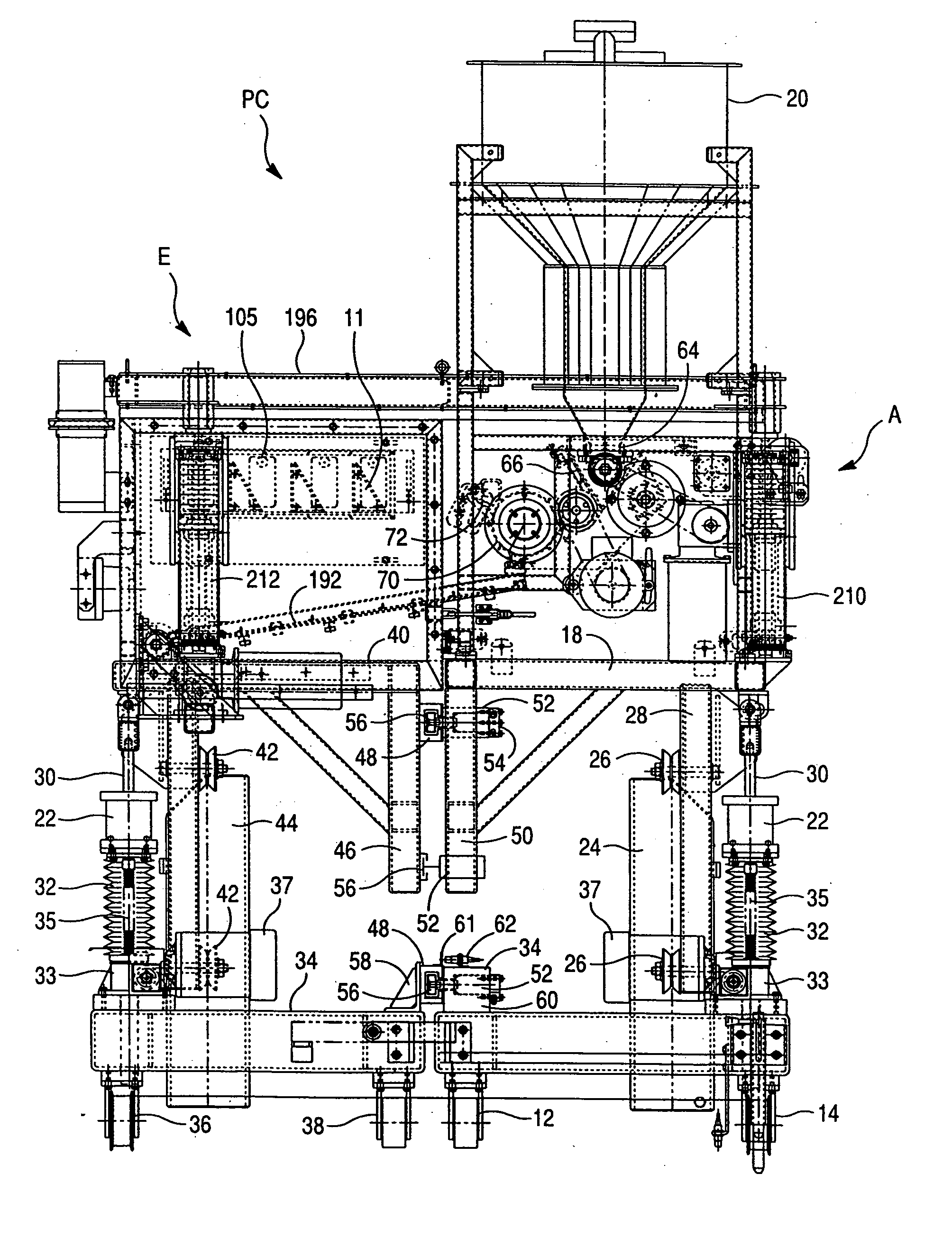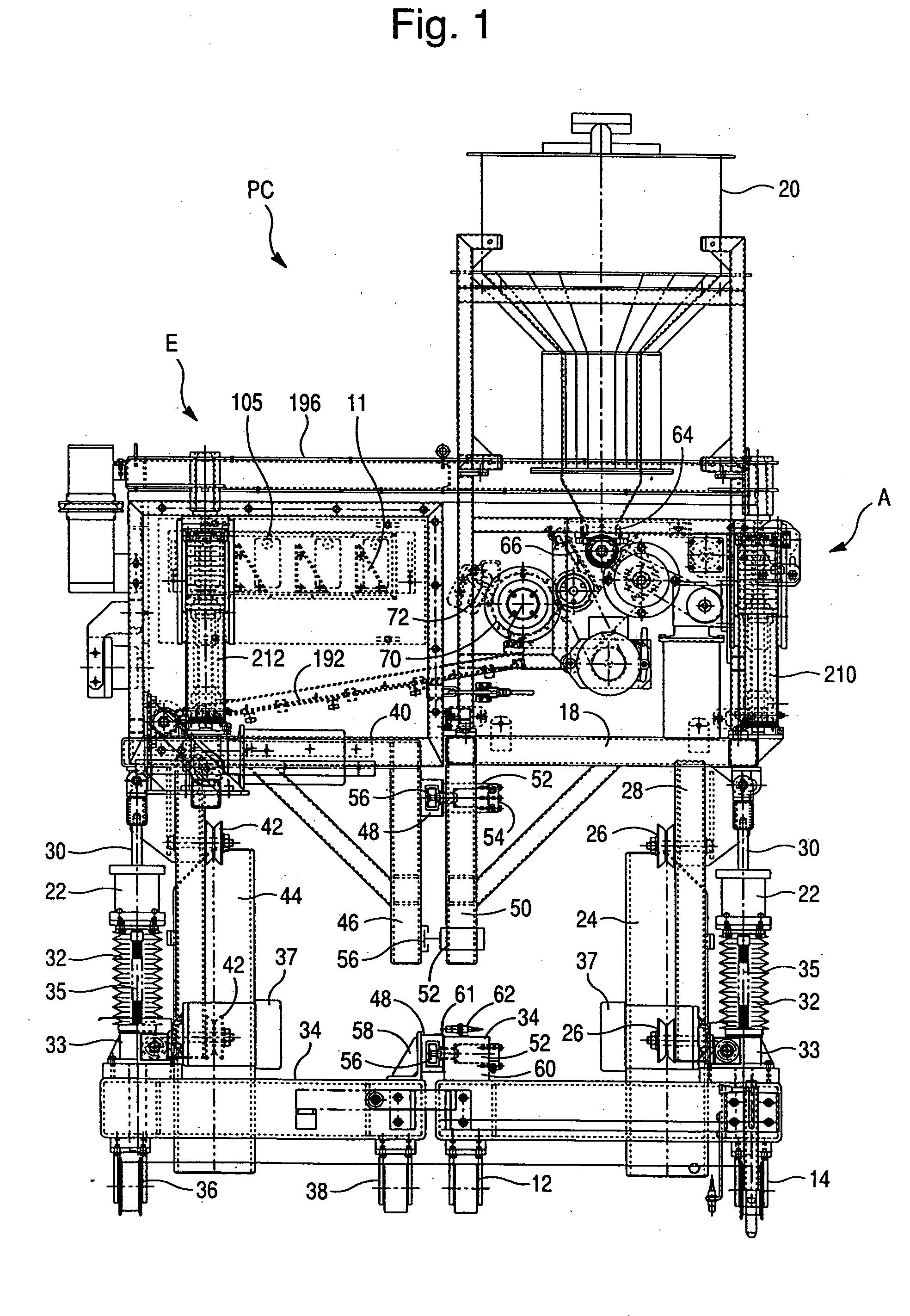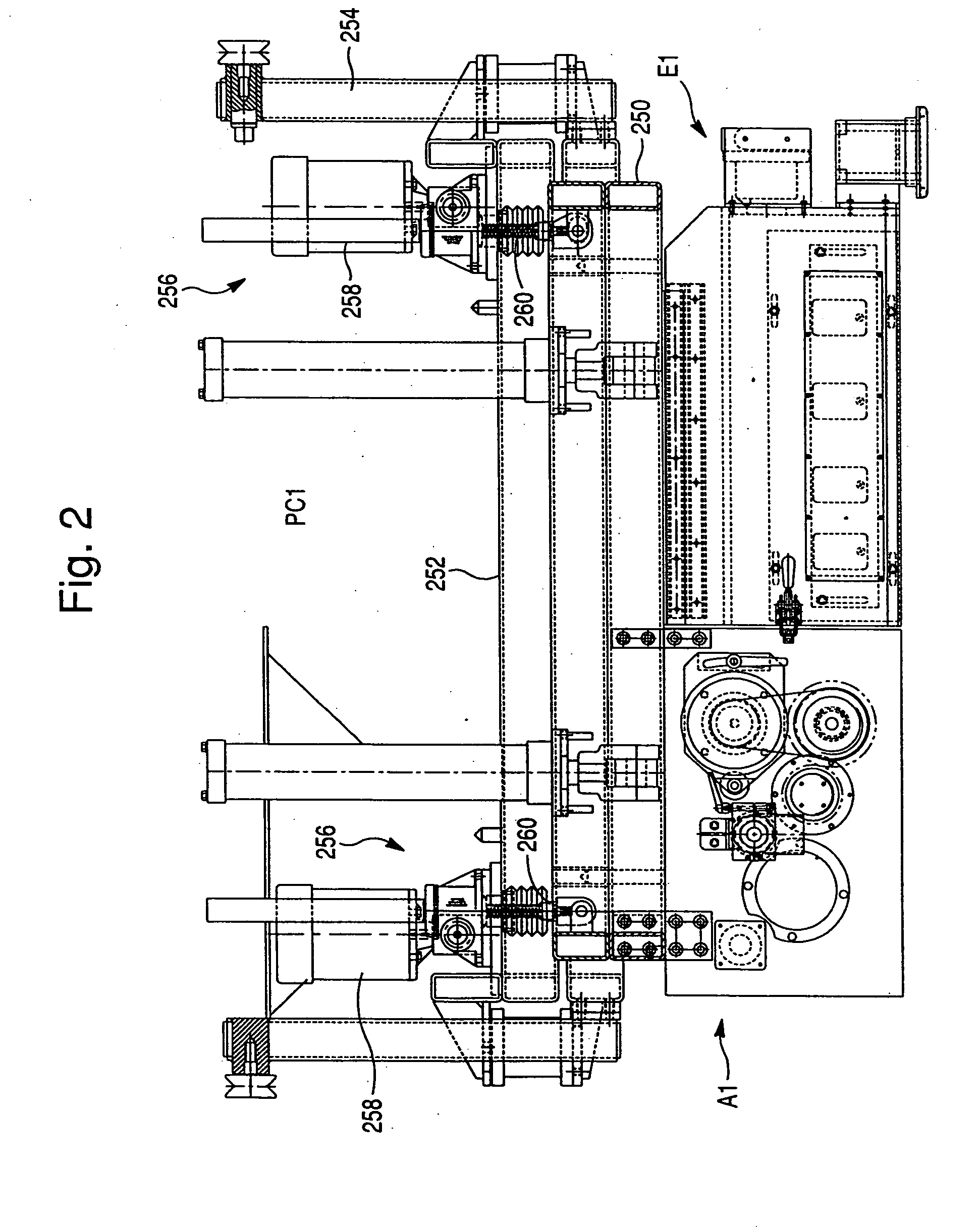Modular powder application system
a powder application system and module technology, applied in the direction of liquid spraying plants, spray discharge apparatuses, tribo-charging spraying, etc., can solve the problems of limited use of electrostatic spray guns, limited use of electrostatic spray chambers, and limited use of these technologies for coating moving strips of material, so as to facilitate shaft rotation and reduce powder contamination
- Summary
- Abstract
- Description
- Claims
- Application Information
AI Technical Summary
Benefits of technology
Problems solved by technology
Method used
Image
Examples
Embodiment Construction
[0054] Powder application system PC of FIG. 1 includes a powder atomizer module A and an adjacently disposed and cooperating electrostatic coating module E. The powder application system PC of FIG. 1 is particularly adapted for electrostatically applying a fine powder, such as powder paint, to a first or lower surface of continuously moving substrate, such as steel sheet. Powder application system PC1 of FIG. 2 likewise has a corresponding powder atomizer module A1 and an adjacently disposed and cooperating electrostatic coating module E1. Powder application system PC1 is particularly adapted for electrostatically applying fine powder, such as powder paint, to continuously moving substrate, such as steel sheet. The powder application systems PC and PC1 are preferably disposed on opposite sides of the moving substrate, and preferably are spaced along the longitudinal or direction of movement of the substrate. Although the powder application systems PC and PC1 are illustrated as apply...
PUM
 Login to View More
Login to View More Abstract
Description
Claims
Application Information
 Login to View More
Login to View More - R&D
- Intellectual Property
- Life Sciences
- Materials
- Tech Scout
- Unparalleled Data Quality
- Higher Quality Content
- 60% Fewer Hallucinations
Browse by: Latest US Patents, China's latest patents, Technical Efficacy Thesaurus, Application Domain, Technology Topic, Popular Technical Reports.
© 2025 PatSnap. All rights reserved.Legal|Privacy policy|Modern Slavery Act Transparency Statement|Sitemap|About US| Contact US: help@patsnap.com



